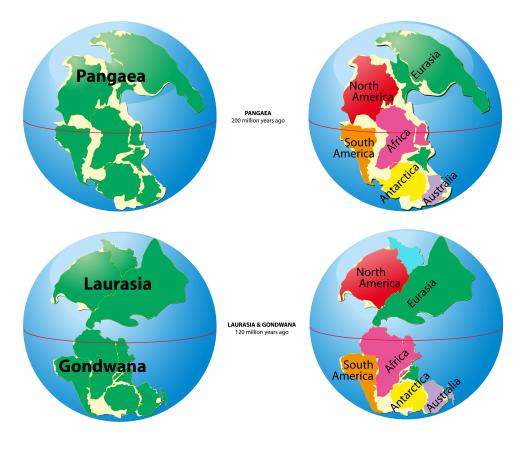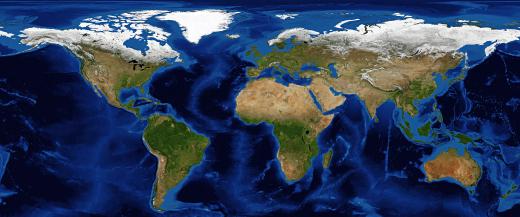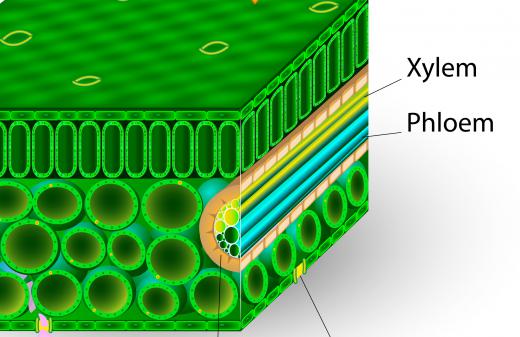What is Gondwana?
 Michael Anissimov
Michael Anissimov
Gondwana, which used to be called Gondwanaland, is an ancient and very large continent that was composed of much of present-day South America, Africa, Madagascar, India, Australia, and Antarctica. It is named after the Gondwana region of northern India, one of the first sites where fossils from the continent were located. Gondwana formed over a long period of time, finally coming into a near-complete form around 500 million years ago, during the early Cambrian period.
Gondwana was so large that the only main bodies of land that were not a part of it were North and South China (separate microcontinents at the time), Siberia, Baltica (present-day Europe), and Laurentia (the craton that includes the present-day USA, Canada, and Greenland). Laurentia and Gondwana were separated by the small Iapetus Sea, and more than 90% of the Earth's land mass was concentrated in the Southern Hemisphere. The vast north sea was known as the Panthalassic Sea, meaning "all seas." During this time, a burst of evolutionary radiation called the Cambrian explosion was occurring, and the precursors of all modern animal phyla emerged.

500 million years ago, Gondwana — and the rest of the land — were barren of life, consisting of nothing but desert, badlands, and mountains. At this time, due to the arrangements of the continents, there were no ice caps, and the world was quite warm. When continents have a lopsided configuration around the poles, it prevents a cold pool from forming, as ocean currents moving through the area bring in heat from tropic latitudes. Because there were no ice caps, the sea levels were quite high, and there was as little as 60% of the land mass there is today. Most of Gondwana was thus covered in shallow seas. These warm, shallow seas were ideal for the abundant marine life that evolved during this time.

The first colonization of the land by life is thought to have occurred during the Silurian, about 444-420 million years ago. At the time, the predominant life form on land were mosses, accompanied by a few primitive vascular plants and arthropods. During the Devonian, 420-360 million years ago, land on life began to explode, with the first true forests creating soils. Amphibians and arthropods colonized the coasts in large numbers, where they are reflected in the fossil record.

From about 350 to 250 million years ago, Gondwana had large areas covered by glaciers. About 250 million years ago, Gondwana collided with the other continents to form Pangaea, a supercontinent composed of most of the land on Earth. Pangaea broke up around 200 million years ago, shortly after the evolution of the dinosaurs, leaving Gondwana on its own again.
Gondwana itself began to break up in the middle Jurassic, about 167 million years ago, and didn't fully fragment until Australia separated from Antarctica approximately 23 million years ago. Today, older species of plants found in multiple locations across South Africa, Chile, and Australia are said to have a "Gondwana distribution."
AS FEATURED ON:
AS FEATURED ON:













Discuss this Article
Post your comments